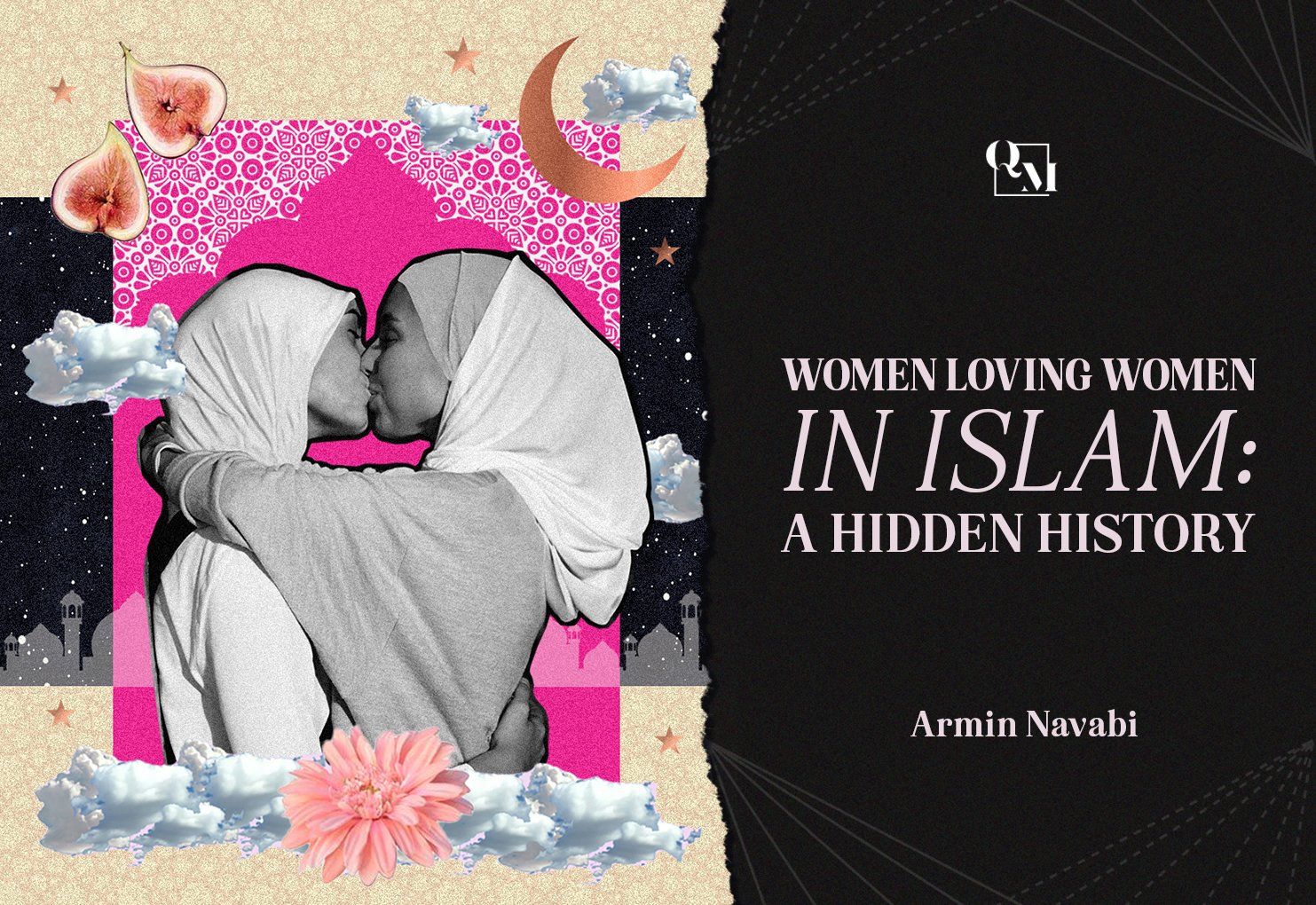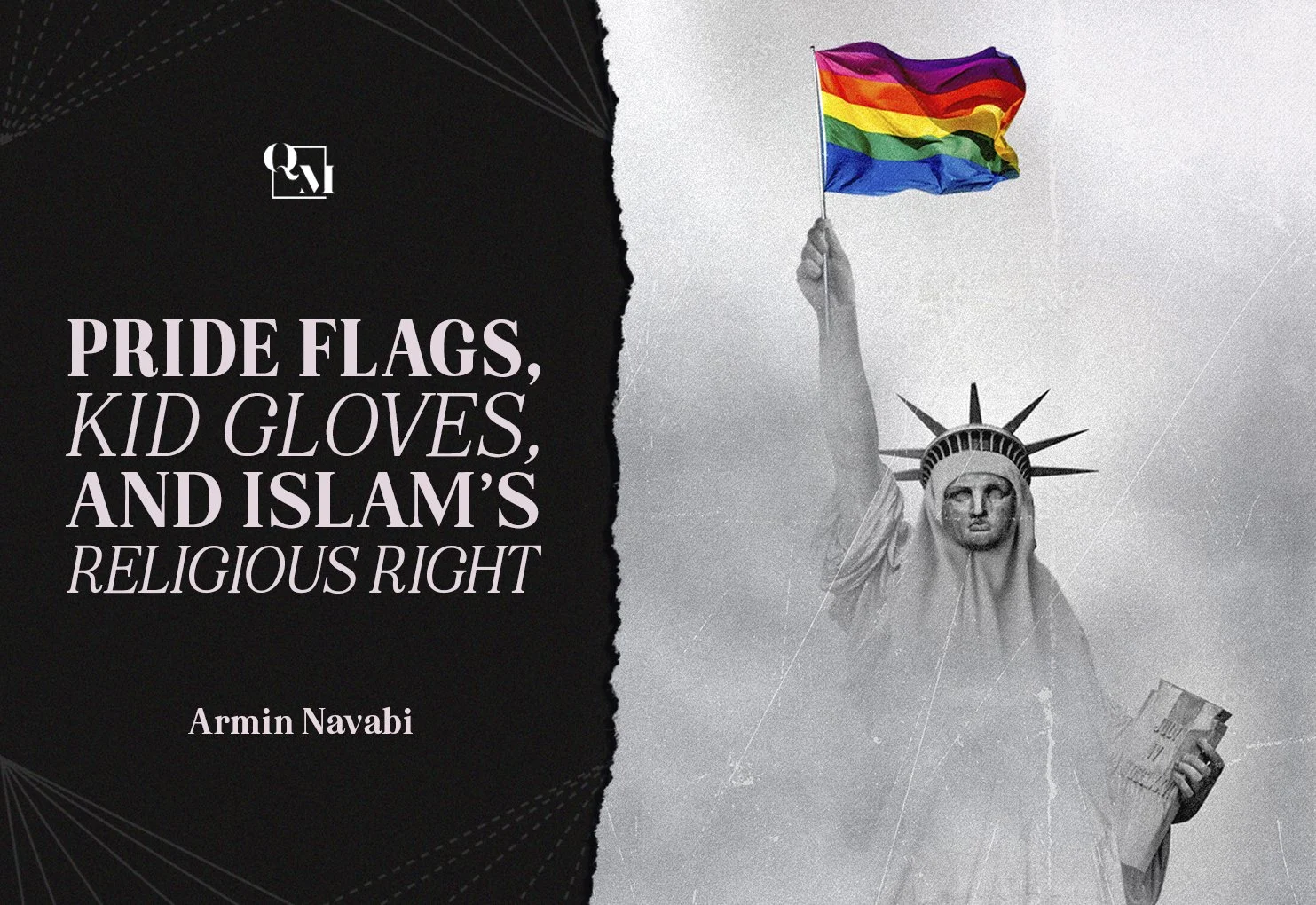Women Loving Women in Islam: A Hidden History
The Islamic world, like many societies throughout history, has had a rather male-centric view of same-sex relations. References to male homosexuality and bisexuality abound throughout the historical literature, but mentions of women loving women are conspicuously scarce. This disparity in representation is in no small part due to the fact that the authors and primary recorders of Islamic law and history, like the cultures from which they came, saw women as secondary to men, and thus less worthy of attention. But despite the long repression, prohibition, and erasure of women loving women in Islam, these relationships happened, they were real, and many fragments of the truth have worked their way into the historical record.
The Qur'an itself does not specifically address same-sex relationships between women. It does, however, directly prohibit same-sex relationships between men. The relevant verse, Qur'an 7:81, states "Indeed, you approach men with desire, instead of women. Rather, you are a transgressing people.” Yet there is a hadith (the written sayings and actions of the Prophet Muhammad) often cited as evidence that same-sex relationships between women are forbidden in Islam: "If a woman comes upon a woman, they are both adulteresses, if a man comes upon a man, then they are both adulterers." That said, just as with Christians and Jews, there is, of course, a vast gulf between what Islam teaches and what Muslims actually do.
Historical accounts suggest that the treatment of lesbian and bisexual relations between women in Islam fluctuated somewhere between open secret and active suppression. For example, a Venetian envoy stationed at the court of the 16th century Ottoman Sultan, Suleiman the Magnificent, reported that the women of the harem were provided sliced cucumbers to prevent them from being used to "play the wanton with each other...” By contrast, when the 7th century Abbasid Caliph, Musa al-Hadi, caught two women in his haram in an affair, there were no countermeasures taken — he simply had them both beheaded.
Outside the harem, feelings of same-sex desire were often preserved in works of poetry. Abu Nuwas, for example, who lived during the Abbasid Caliphate (756–814 CE) wrote openly homoerotic poetry in which he divulged his own same-sex desires and relations. Female poets in the Islamic world, we are told, also wrote about their female lovers, but sadly much of this poetry has not survived. Mentions of these works have however been passed down through the historical record through periodic mentions in, for example, the archives of the Ottoman Empire. These references are a poor substitute for the originals, but they offer a glimpse into the experiences of same-sex love and desire in Islamic societies of the past. Persia scholar Kathryn Babayan used late-17th-century sources, including the poetry of a widow who spoke of her love for another woman, to examine the culture of intensely close sisterhood relationships common in Safavid Iran (1501–1722 CE):
“We had been companions.
In spirit, we ate each other’s sorrow.
She was a relative better than any sister,
Kinder than any of my other relatives.
But suddenly heaven’s playful tricks
Appeared on the stage of deceit,
So much so that [heaven] hid from my gaze that kind one
As a body is separate from its soul.
Forty houses they placed between us
And inflicted separation between our two bodies.
For our hearts, no cure save constraint;
In separation, both of us have waited a century.
Until at least, the end of the night of torturous separation
Turned into the morning of spiritual union.”
The sisterhood culture in Safavid Iran permitted more than just poetry, also including exchanges of intimacy, from courtship gestures like love letters containing specific spices associated with romance, to full-on erotic consummation.
Painting of Muslim women from the Abbasid caliphate period (750–1258 CE).
Some sources suggest that female-female relationships arose in some cases as acts of resistance. The 12th century Arab geographer and cartographer Muhammad al-Idrisi wrote that intelligent women would often engage in same-sex relationships as a means of avoiding submission to the desires of men. This practice brings the 20th century notion of “political lesbianism” to mind, where women in radical feminist subcultures chose to form relationships with other women as a sort of political statement.
The Ottoman era (1299–1922 CE) saw the prevalence of bathhouses, or hammams, as popular gathering places among women, which served as an underground haven where many could enjoy intimacy with each other. That reality could not be kept completely secret, and drew the attention and ire of men, who subsequently refused to let their wives go to these bathhouses. Within the larger cultural framework of the era, Ottoman harems, which were an integral part of the palace, often housed a large number of women who were separated from men and lived in close proximity to one another. It is not unexpected, therefore, that some of these women formed intimate relationships with each other. Too often, these same-sex couplings between women in Islam are mentioned in the historical record by sources who sought to condemn or suppress rather than document. While direct evidence is limited, the references that do exist hint at a broader hidden history obscured by religious purges, the need for secrecy, or lost to time itself.
In the modern Islamic world, the acceptance and visibility of lesbians and bisexual women varies greatly by country and culture, and the lack of comprehensive data makes it difficult to provide detailed statistics. The International Lesbian, Gay, Bisexual, Trans and Intersex Association (ILGA) found in a 2020 report that a majority of Muslim-majority countries have laws that criminalize homosexuality, with penalties ranging from fines, to imprisonment, and death. In Iran, Afghanistan, Saudi Arabia, Yemen, and Mauritania, anyone charged with engaging in same-sex intimacy could face the death penalty. Despite these draconian restrictions, LGBT activism has been growing in the Islamic world. While progress is slow and difficult, the fight toward greater acceptance is gaining steam.
The teachings of Islam are, in totality, undeniably hostile to the LGBT community, but as with every religion, people pick and choose what to follow and what to ignore. Many religious people sincerely believe that by ostracizing, abusing, and even murdering people for acting on same-sex attractions, they’re doing good by helping save LGBT people’s immortal souls from an eternal afterlife of torment. And yet, how one should treat LGBT people from an Islamic point of view has long been a matter of intense debate because it is not entirely clear from either the Qur’an or hadiths and is, therefore, subject to a great deal of interpretation. But what is clear is that making LGBT people’s lives a living hell in the here and now neither changes their sexuality, nor in many cases even their behavior, and leads to all kinds of avoidable health disparities. By showing that homosexual and bisexual people have always existed in the Muslim world, perhaps we can inspire interpretations of Islam that remember LGBT people’s humanity.
Published Jul 10, 2023








